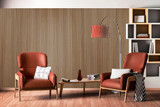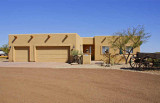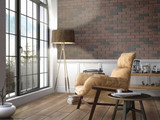
Updating your home’s interior can be a significant investment, especially when you’re adding appealing touches like solid wood paneling. Here at Barron Designs, we offer a couple of great, budget-friendly solid wood paneling options that can help you create lavish interiors, but you may be unsure which is right for your home.
That’s why we’ve created this guide. From grain texture to color depth, thermal modification to style compatibility, we’re breaking down everything you need to know to decide between thermally modified poplar and pine wood planks. Read below to discover how to choose between the two so that you can create wall or ceiling paneling that matches your interior vision.
Comparing Poplar vs Pine Wood
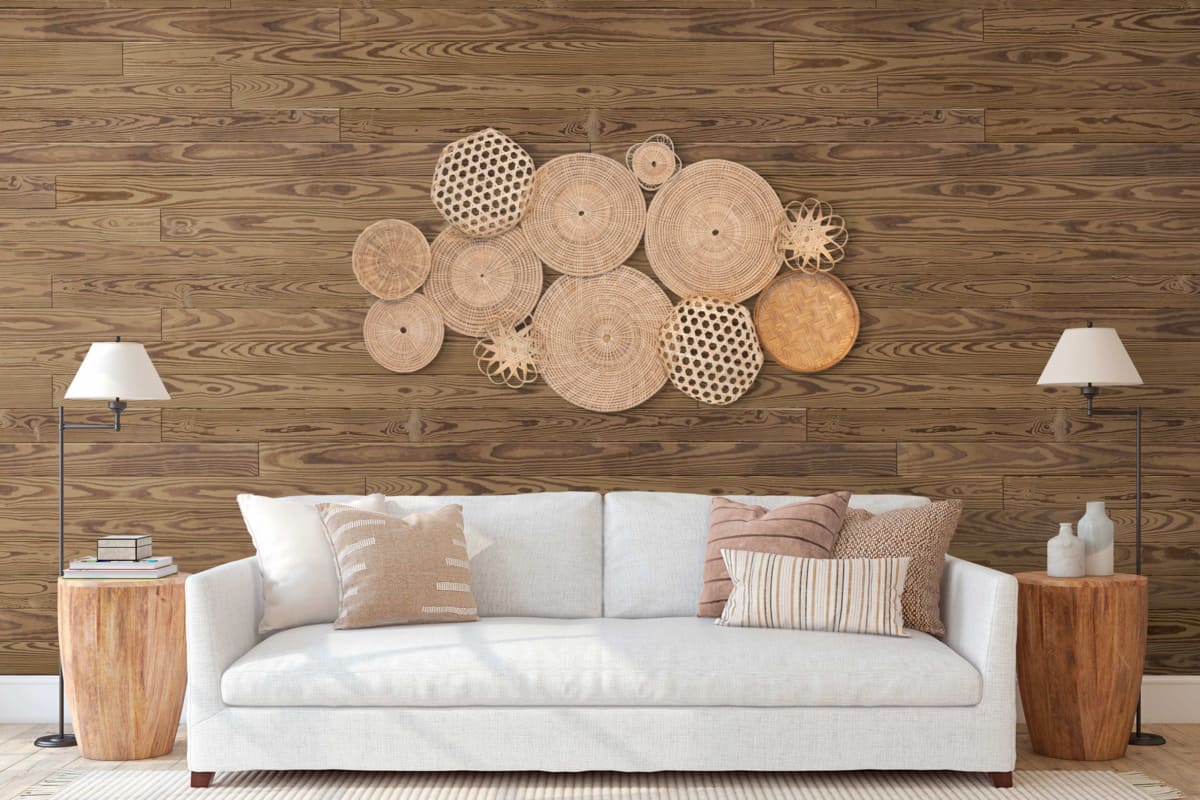
Thermal Pine Wood Wall Paneling
What Poplar & Pine Have in Common: Thermally Modified Wood
One of the biggest advantages of both our poplar and pine planks is that they’ve been thermally modified. No matter which you choose, you’re getting elevated performance and long-term beauty.
This thermal wood modification process gently “toasts” the wood, enhancing its natural color while boosting durability and resistance to rot. The result? Richer tones that run throughout the plank (not just the surface), improved stability, and no need for additional staining or chemical treatments.
It’s a smart, eco-friendly upgrade to traditional wood—and it’s what sets Barron Designs’ wood planks apart.
Thermal Pine Wood Wall Paneling Traits
Thermal Pine Solid Wood Paneling features a bold grain texture that offers lots of contrast between lighter shades and darker shades. As thermally modified wood, it’s still darker than unfinished or untreated pine.
Thermal Poplar Wood Wall Paneling Traits
Thermal Poplar Solid Wood Paneling delivers a rich, deep shade and a subtle grain texture that gives it the look and feel of mahogany.
Both poplar and pine planks are double-sided and can be installed as V-groove or nickel-gap shiplap, offering flexibility in design and installation.
Which is Stronger: Poplar or Pine?
When it comes to durability, both our Thermal Poplar and Thermal Pine Solid Wood Paneling offer enhanced strength thanks to the thermal modification process. This treatment improves the wood’s natural stability and resistance to rot—making both options a smart choice for long-lasting installations.
That said, poplar is generally considered a bit tougher than pine due to its hardwood classification. On the Janka hardness scale, which measures resistance to denting and wear, poplar typically scores around 540, while pine averages closer to 380. This makes poplar a great option if you're working in a high-traffic area or want a slightly more durable surface—especially on accent walls or ceilings that are more exposed.
For typical wall and ceiling applications, though, both woods hold up beautifully. And since both are thermally modified, you're getting elevated performance regardless of which species you choose.
Poplar vs Pine Weight
Weight is another factor that’s worth considering, especially if you're handling the installation yourself. Generally speaking, poplar is a denser wood than pine, which means it tends to weigh slightly more. Standard measurements show poplar averaging around 2.7 lbs per board foot, and pine closer to 2.4 lbs.
However, when you're working with our Thermal Poplar and Thermal Pine planks, this difference is minimal and shouldn’t impact your project in a meaningful way. Our Thermal Treated Pine is 8 bs per 8 ft long plank, and our Thermal Treated Poplar is 7.2 lbs per 8 ft long plank. Both are manageable for DIYers and don’t require any special tools or structural reinforcement.
So whether you're installing a ceiling treatment, full accent wall, or wainscoting, you’ll find both options to be user-friendly and easy to work with, without sacrificing strength or visual impact.
Which Wood Wall Paneling Styles are Right for Your Home?
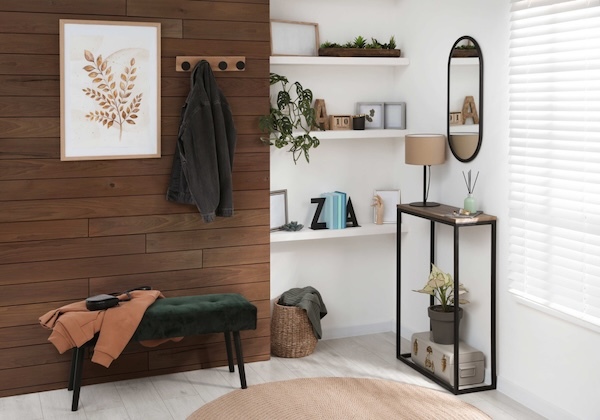
Thermal Poplar Wood Wall Paneling
Poplar and Pine Versatility
Whether you’re leaning toward breezy coastal interiors, warm farmhouse aesthetics, or sleek modern design, our thermal poplar and pine planks adapt effortlessly.
Each plank can be installed horizontally or vertically, and the dual-sided milling lets you choose between a traditional tongue-and-groove or clean nickel-gap shiplap look.
Fully paneled walls, accent walls, wainscoting — there are many different ways to use our poplar and pine planks to create the wood paneling design of your dreams. Below, we have a few guidelines to help you choose between the two.
Choose Pine When:
- You want to create a high-contrast look with the bold wood grain texture.
- You’d like a look for rustic homes, cabin-styled interiors, and farmhouses.
- You’re embracing design trends like modern rustic or Scandinavian farmhouse, where texture plays a central role.
- You want to make a visual impact with minimal decor by using pine’s pattern as the focal point.
Choose Poplar When:
You want rich, dark colors and subtle changes in tone.
- You’re working with old-fashioned styles that trend more towards elegance rather than rustic, like Craftsman or Victorian homes.
- You’re creating a modern or minimalist interior, such as in contemporary or mid-century modern homes.
- You’re designing around furniture, art, or shelving and want the paneling to act as a neutral backdrop.
Still unsure? If your room has a lot of natural light or decorative elements, poplar’s subdued grain allows your décor to shine. If the paneling itself is the star, pine’s high contrast pattern might be the better choice.
Which Style to Choose For Ceiling Paneling?
When it comes to choosing between poplar and pine for ceiling paneling, many of the same rules above still apply. In general, pine lends itself well to traditional home styles that favor a more rustic, nature-rooted feeling, while poplar works well when you want a more elegant, modern, or minimalist look.
Consider Ceiling Height and Light
- Poplar’s darker tone can make a room feel cozier, ideal for large open-concept living spaces.
- Pine reflects more light, helping to keep rooms airy and open—perfect for homes with low ceilings or limited windows.
Add Character or Subtlety
- Use pine to create an eye-catching ceiling that draws the eye upward and adds dimension.
- Opt for poplar if you’re going for subtle sophistication or want to layer lighting for a warm, intimate environment.
Bring Your Interior Vision to Life With Barron Designs
Whether your aesthetic leans cozy cabin, sleek modern, or refined traditional, Barron Designs' thermally modified wood planks are made to help you realize your vision. These premium real wood planks deliver elevated design and long-term durability in one easy-to-install package.
When you’re trying to choose between poplar vs. pine, be sure to consider the factors discussed above. It’s also a smart idea to see both products in person before you make your final decision. That’s why we offer both Thermal Pine Solid Wood Wall Paneling samples and Thermal Poplar Solid Wood Wall Paneling samples. Order your samples today and start transforming your interior with Barron’s expertly crafted, American-made wood planks.
Shop Related Products